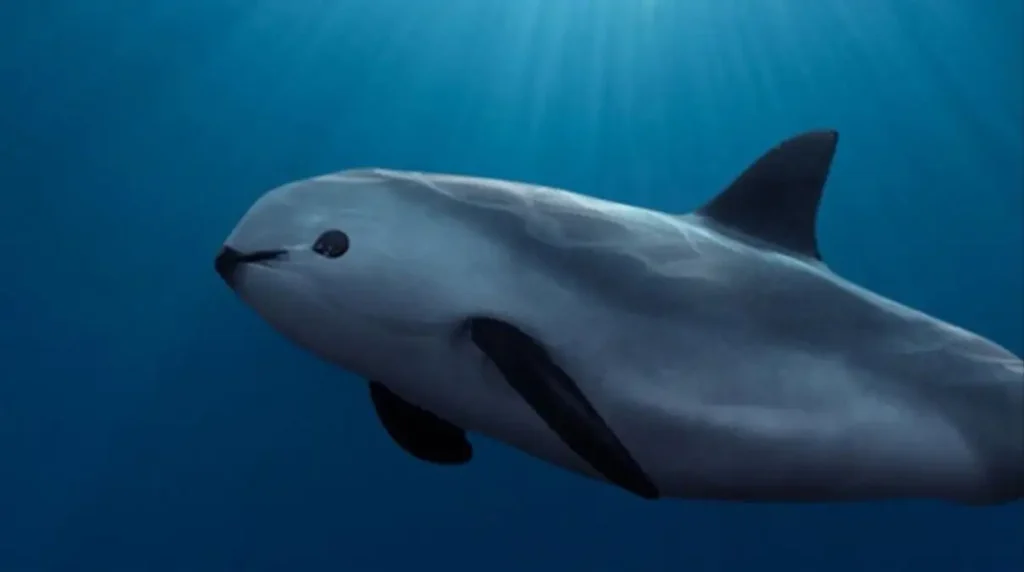Table of Contents
Introduction
The vaquita, one of the most endangered marine mammals, has become a symbol of the urgent need for marine conservation. These small porpoises are critically important to their ecosystem, yet they teeter on the brink of extinction. Let’s delve into the world of the vaquita, understanding their importance and the dire threats they face.
What is the Vaquita?
The vaquita (Phocoena sinus) is the smallest cetacean, reaching about 4 to 5 feet in length and weighing up to 120 pounds. They have distinctive facial markings, with dark rings around their eyes and patches on their lips, giving them a unique, endearing appearance. Vaquitas inhabit the northern part of the Gulf of California, Mexico, a habitat rich with diverse marine life.
History and Discovery
First discovered in 1958, the vaquita’s scientific classification places it within the porpoise family. These mammals have evolved to thrive in the warm, shallow waters of their limited range, making them unique among porpoises. Their distinct evolutionary path has led to their specialized adaptations, distinguishing them from other marine mammals.
Behavior and Ecology
Vaquitas are elusive creatures, often found alone or in small groups of two or three. They feed primarily on small fish and squid, using their acute sonar to hunt in the murky waters of their habitat. The reproductive rate of vaquitas is slow; females typically give birth to one calf every two years, which significantly hampers their population growth in the face of increasing threats.
Current Status of the Vaquita
Sadly, vaquitas are classified as critically endangered by the International Union for Conservation of Nature (IUCN). Current estimates suggest that fewer than 10 individuals remain in the wild. This drastic decline is largely due to human activities, putting immense pressure on this fragile species.
Threats to the Vaquita
The primary threat to vaquitas is illegal fishing, particularly the use of gillnets intended for catching totoaba fish. These nets entangle vaquitas, leading to their accidental capture and death. Habitat destruction, pollution, and climate change further exacerbate their vulnerability.
Conservation Efforts
Various conservation efforts are underway to save the vaquita. Governments and NGOs have implemented bans on gillnets, increased patrols to prevent illegal fishing, and promoted alternative livelihoods for local communities. International cooperation has been crucial, with countries and organizations around the world rallying to support these initiatives.
Success Stories and Challenges
While there have been some successes, such as the creation of protected areas and increased awareness, challenges remain. The enforcement of fishing bans is difficult, and illegal activities persist. Despite these efforts, the vaquita’s numbers continue to dwindle, highlighting the need for more effective and immediate action.
How You Can Help
You can play a role in saving the vaquita. Supporting reputable conservation organizations, advocating for stronger marine protection policies, and making responsible consumer choices to avoid products linked to illegal fishing are all impactful actions. Every effort counts in the fight to preserve this species.
The Future of the Vaquita
The future of the vaquita hangs in the balance. Optimistic projections suggest that with sustained effort and innovative conservation strategies, recovery is possible. Technology, such as drone surveillance and improved monitoring systems, could play a significant role in protecting their habitat and preventing illegal activities.
Global Significance
Why should the world care about the vaquita? As the most endangered marine mammal, their plight underscores the broader issues facing marine ecosystems worldwide. The vaquita’s struggle is a stark reminder of the consequences of human activity on the natural world, emphasizing the need for global conservation efforts.
Conclusion
The vaquita’s survival is a race against time, and every action counts. From raising awareness to supporting conservation initiatives, each effort brings us one step closer to saving this precious species. Let’s not let the vaquita become a tragic symbol of our failure to protect our planet’s incredible biodiversity.
Additional Resources
For those interested in learning more, check out these recommended books and articles:
- “Vaquita: Science, Politics, and Crime in the Sea of Cortez” by Brooke Bessesen
- Articles from the World Wildlife Fund (WWF) and the IUCN Red List
Documentaries and educational videos also provide insightful perspectives on the vaquita’s plight:
- “Sea of Shadows” (National Geographic Documentary)
- Educational videos from conservation organizations like WWF and Sea Shepherd
Personal Reflection
The vaquita’s situation is heartbreaking yet calls for hope and action. Their story is a testament to the impact of human activity on wildlife and the urgent need for collective action in conservation. By saving the vaquita, we contribute to a larger movement towards preserving our planet’s rich biodiversity.
Read Also:-BEEPLE
FAQs
What does the vaquita eat?
Vaquitas primarily feed on small fish and squid found in their shallow marine habitat.
Why are vaquitas endangered?
Vaquitas are endangered due to illegal fishing practices, habitat destruction, and bycatch in gillnets used for catching totoaba fish.
How many vaquitas are left?
Fewer than 10 vaquitas are estimated to remain in the wild, making them critically endangered.
What are gillnets, and why are they harmful to vaquitas?
Gillnets are fishing nets that trap fish by their gills. They are harmful to vaquitas because they can get entangled and drown.
How can I help save the vaquita?
You can help by supporting conservation organizations, advocating for protective policies, and avoiding products linked to illegal fishing.







